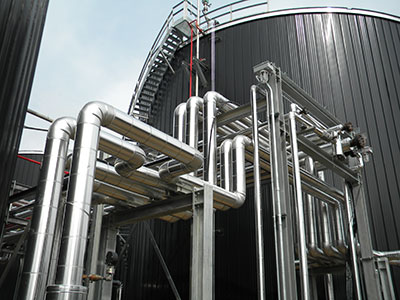Are you struggling to pick the right pipe insulation for your next industrial project? Making the wrong choice could mean higher costs, more repairs, and avoidable headaches.
Cellular glass and fiberglass are two popular insulation materials for pipes. Cellular glass stands out for its non-absorbent, fireproof, and long-lasting qualities, while fiberglass is lightweight, cost-effective, and widely available.

Picking the right insulation matters if you want to avoid wasted energy and expensive repairs. I know because I have seen what happens when companies cut corners on insulation. In this article, I will walk through what makes cellular glass and fiberglass different, where each works best, and how you can get the most reliable performance from your systems. Whether you manage chemical tanks or run a busy plant, these details can save you money and stress. Let’s start by looking at what cellular glass insulation really is.
What is Cellular Glass Insulation?
When plant engineers face moisture or corrosion problems, the usual insulation choices quickly show their limits. Pipes and tanks need to stay protected for years, not just a season or two.
Cellular glass insulation is made from glass crushed into a fine powder and then foamed under high temperature, forming a rigid, closed-cell, completely waterproof insulation. It stands up to fire, water, most chemicals, and extreme temperatures.

Cellular glass is a unique material. Its biggest feature is that each tiny glass cell is fully sealed. This structure keeps water, vapor, and corrosive agents out. In my experience, when I installed cellular glass on pipes in areas with heavy rainfall or spills, I never had to worry about wet insulation leading to corrosion under insulation (CUI). Cellular glass stays dry and strong, meaning it can protect steel pipes in a chemical plant, a storage tank in a port, or a cryogenic pipeline. Its non-absorbent nature can even stop ice build-up and damage in freezing conditions. You do not have to worry about fire, either—cellular glass simply won’t burn. That makes it an excellent fit for high-risk industrial locations where safety and reliability come first.
Is foam glass the same as cellular glass?
It is easy to get confused by the different names for insulation materials. Many suppliers use “foam glass” and “cellular glass” to mean the same thing.
Foam glass and cellular glass both refer to the same rigid glass insulation. The terms are interchangeable and describe glass that has been expanded to form a closed-cell, lightweight, non-absorbent material.

My conversations with engineers worldwide confirm this—every time I see a spec sheet for foam glass, it matches the features of cellular glass exactly. Both are made by baking glass powder with a foaming agent, creating a block full of microscopic closed bubbles. No matter what you call it, the advantages remain steady: total moisture resistance, no fire risk, and long-lasting stability under stress. When a tank system manager asks me if there is a difference, I always say—the names may change by region or supplier, but the material inside is the same.
What type of insulation is best for pipes?
Every facility manager I know wants the best balance of efficiency, safety, and cost when selecting pipe insulation. The answer depends on the risks you face.
For pipes exposed to water, harsh chemicals, fire risk, or extreme temperatures, cellular glass offers the highest protection level. For less demanding setups or when budget comes first, fiberglass may be a good fit.
Most of the time, I start with a checklist. If your pipe system must never absorb water, must not burn, must last for decades, and the cost of failure is high—cellular glass nearly always wins. I often recommend it in chemical plants or oil and gas storage farms. Fiberglass comes in handy indoors or above ground where leaks, frost, or heavy impacts are rare. Fiberglass is lighter, quicker to cut, and costs less up front—but it can break down if it gets wet or faces tough conditions. I have seen cases where wet fiberglass led to rusted pipes, causing expensive repairs within five years. When safety and asset life matter most, cellular glass stands above the rest.
Benefits of Cellular Glass Insulation
Good insulation makes everything easier—lower bills, fewer maintenance calls, greater safety. Some benefits are only clear after years on the job.
Cellular glass insulation offers unmatched water resistance, fire safety, insect-proof performance, high load support, and almost unlimited service life. It keeps heat and cold where you want it and does not let outside problems get inside.
In projects where pipes run outdoors, underground, or through tough environments, I have come to trust only what cellular glass can do. I have seen it stay bone dry after storms and chemical spills. Bugs and rodents ignore it. Flames cannot start or spread in it. There is no rot, swelling, or sagging even after years in service. It stands up to heavy pipes, freezing cold, hot oil, or cryogenic gases. When you need an insulation to last as long as your tank, cellular glass delivers. It might cost more up front, but the long-term savings and safety make it the better value for challenging jobs.
Conclusion
Choosing the right insulation depends on your needs. For critical, demanding environments, cellular glass outperforms fiberglass with superior durability, safety, and peace of mind.

